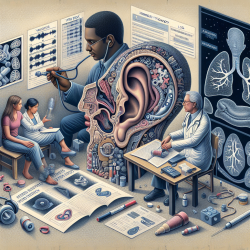Supervisory skills in the field of speech pathology are crucial for fostering the growth of clinicians and ensuring the delivery of high-quality care. A research article titled "A Comparison of Four Methods of Analysis of Supervisor/Supervisee Interaction During Conferencing" offers valuable insights into improving these skills through the analysis of supervisory interactions. This blog post explores the key findings from this research and suggests ways practitioners can implement these outcomes to enhance their supervisory practices.
The research compares four analytical methods for examining supervisor-supervisee interactions: Underwood's Category System, McCrea's Adapted System, Culatta and Seltzer's Content and Sequence, and Weller's MOSAICS. Each method provides a unique lens through which supervisory behavior can be analyzed, offering different benefits and insights into the supervisory process.
- Underwood's Category System focuses on specific behaviors of both supervisors and supervisees, allowing for a detailed breakdown of interactions. Supervisors can use this method to increase supportive behaviors and reduce criticism, fostering a more positive learning environment.
- McCrea's Adapted System emphasizes the interpersonal relationship between the supervisor and supervisee, highlighting the importance of empathy, respect, and genuineness. This approach can help supervisors build stronger relationships with their supervisees, promoting more effective communication and feedback.
- Culatta and Seltzer's Content and Sequence analysis provides a structured way to examine the flow of the supervisory session, focusing on the content and sequence of interactions. This method can help supervisors ensure that sessions are balanced and that supervisees have ample opportunity to contribute.
- Weller's MOSAICS is a complex system that offers a comprehensive analysis of the supervisory conference, including the content and types of interactions. This method can help supervisors and supervisees understand their contributions to the session and identify areas for improvement.
Implementing these analytical methods can help supervisors in speech pathology develop a more reflective practice, identifying strengths and areas for improvement in their supervisory style. By focusing on specific behaviors, building strong interpersonal relationships, ensuring balanced interactions, and comprehensively analyzing sessions, supervisors can enhance their effectiveness and support the professional growth of their supervisees.
For practitioners interested in improving their supervisory skills, exploring these four methods can provide a foundation for self-reflection and professional development. Whether through formal training or self-study, incorporating these analytical techniques into supervisory practice can lead to more effective and supportive supervision.
To read the original research paper, please follow this link: A Comparison of Four Methods of Analysis of Supervisor/Supervisee Interaction During Conferencing.










